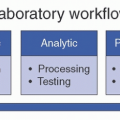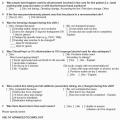Antimicrobial Stewardship in Outpatients
Zachary Willis
Emily Ciccone
OVERUSE OF ANTIMICROBIALS IN AMBULATORY SETTINGS
Evidence of Antimicrobial Overuse in High-Income Countries
Concerns about antibiotic overuse were first raised by Alexander Fleming, who worried in 1945 that availability of oral penicillin would lead to “self-medication and all its abuses.”1 Fleming’s prescience was confirmed just a decade later by a study of a small community in South Dakota. Residents received an average of 3.9 antibiotic prescriptions over the 5-year period, and the investigators estimated that 52.5% of those prescriptions were not indicated.2
While early antimicrobial stewardship programs have focused primarily on the inpatient setting, ˜80%-90% of total human antibiotic consumption occurs in the ambulatory setting.3 Ambulatory medical practice includes primary care, outpatient subspecialty care, urgent care, ambulatory surgery centers, emergency care, and telemedicine; the broad range of settings is accompanied by substantial variability in antibiotic utilization. Acute respiratory tract infections (ARTIs) are the most frequent indications for antibiotics in ambulatory care, followed by skin and soft tissue infections, genitourinary infections, and gastrointestinal infections.4 In the United States, patients with respiratory infections not requiring antibiotics are much more likely to receive antibiotic prescriptions from urgent care centers and emergency departments (EDs) than from medical offices and retail clinics.5 In direct-toconsumer telemedicine visits, a growing healthcare sector, antibiotics are prescribed more frequently than in medical offices, and antibiotic selections are broader spectrum in the telemedicine visits.6,7 These diverse settings present unique challenges for antimicrobial stewardship efforts.
In the United States, ˜506 outpatient antibiotic courses are prescribed per 1000 person-years or about half of an antibiotic prescription per person per year.8 While similar antibiotic utilization rates are observed in England as in the United States,9 Swedes receive just 318 antibiotic courses per person-year.10 Regional variation in antibiotic prescribing rates suggests overuse. In the United States, it is estimated that 30% of total antibiotic prescriptions and 50% of prescriptions for ARTIs are likely unnecessary.4,11 There is substantial, mostly unexplained, regional variation in antibiotic utilization within the United States, with a nearly fourfold difference in per capita antibiotic prescribing rates between the lowest- and highest-prescribing states.8 In addition to gross overuse of antibiotics, inappropriate antibiotic selections are also common, with large proportions of patients receiving antibiotics not recommended as first line by broadly accepted prescribing guidelines.12,13,14,15 Non-first-line antibiotics are generally broader spectrum, more expensive, and more likely to cause adverse effects than first-line antibiotics.
The drivers of antibiotic overuse in the ambulatory setting are manifold. While direct requests for antibiotics appear to be rare, providers often perceive patients’ desire for antibiotics and prescribe out of concern for patient satisfaction.16,17,18,19 Patients report practicing antibiotic shopping strategies, and clinicians report that other clinicians’ willingness to prescribe antibiotics unnecessarily results in greater prescribing pressure.18,19 Lack of familiarity with antibiotic prescribing guidelines also plays a role, as providers express a desire for local evidence-based guidance.19 Diagnostic uncertainty presents a substantial challenge to frontline providers, with less use of diagnostic testing and more limited ability to follow up compared to the hospital setting.
Antibiotic Overuse in Low- and Middle-Income Countries
Although antibiotic prescribing patterns are less well studied outside North America and Europe, it is clear that antibiotic overuse in outpatient settings is a global issue.20 In fact, it is likely an even greater concern in low- and middle-income countries (LMIC) as compared to resourcerich contexts because of limited access to diagnostic tests, less regulation of antimicrobial dispensing, and a lack of antibiotic stewardship programs. In an analysis of 71 countries, antibiotic use increased from 54 billion to 73 billion units between 2000 and 2010 with 76% of the increase attributable to only five developing countries: Brazil, Russia, India, China, and South Africa.21
In LMIC, outpatient antibiotics are commonly prescribed for respiratory and gastrointestinal complaints and acute undifferentiated febrile illnesses. In sub-Saharan Africa, in particular, the wide availability of malaria rapid diagnostic tests that allow for accurate and timely diagnosis or exclusion of malaria has increased awareness that a majority of pediatric fever episodes are due to other
causes.22,23,24 Although many of these illnesses are viral and do not require antibiotic treatment, these febrile patients are nonetheless often treated empirically with antibiotics, in part because of the lack of other diagnostic tools.25,26,27 Globally, this diagnostic uncertainty often leads to empiric treatment with drugs that are of broader spectrum than necessary.28 Outpatient antibiotic overuse is also rampant in Southeast Asia and India, especially in the context of respiratory infections.29,30,31,32,33 In China, a large study of outpatient clinics found that more than 60% of antibiotic prescriptions were inappropriate, with 78%-93% of respiratory infections being treated with antibiotics. Drivers of overuse included inadequate training and clinics’ reliance on direct antibiotic sales.34 Reports such as these suggest that antibiotic overuse in LMICs is a complex, growing challenge that will require a much different set of solutions from those used in high-income countries.
causes.22,23,24 Although many of these illnesses are viral and do not require antibiotic treatment, these febrile patients are nonetheless often treated empirically with antibiotics, in part because of the lack of other diagnostic tools.25,26,27 Globally, this diagnostic uncertainty often leads to empiric treatment with drugs that are of broader spectrum than necessary.28 Outpatient antibiotic overuse is also rampant in Southeast Asia and India, especially in the context of respiratory infections.29,30,31,32,33 In China, a large study of outpatient clinics found that more than 60% of antibiotic prescriptions were inappropriate, with 78%-93% of respiratory infections being treated with antibiotics. Drivers of overuse included inadequate training and clinics’ reliance on direct antibiotic sales.34 Reports such as these suggest that antibiotic overuse in LMICs is a complex, growing challenge that will require a much different set of solutions from those used in high-income countries.
IMPACT OF ANTIMICROBIAL OVERUSE IN AMBULATORY SETTINGS
As in the inpatient setting, overuse of antimicrobials precipitates Clostridioides (formerly Clostridium) difficile infections, direct drug-related toxicity, and antimicrobial resistance (AMR). Unnecessary antibiotics also increase healthcare costs. Limiting inappropriate antibiotic use improves patient outcomes, reduces adverse events, and provides economic benefit to both the patient and the healthcare system.
In the ambulatory care setting, antibiotic use is a well-established risk factor for community-associated C difficile infection (CA-CDI) in both adult and pediatric populations.35,36,37 Antibiotics disrupt the normal colonic microbiome, allowing for C. difficile to replicate and produce toxins. The degree of risk varies depending on the specific antibiotic, with fluoroquinolones, clindamycin, and broad-spectrum cephalosporins conferring the highest risk of CA-CDI.38 Use of multiple antibiotics and longer duration of therapy also predispose patients to a greater risk of C. difficile infection (CDI).
Antibiotics used in the outpatient setting, while generally considered safe, are not without adverse effects. Because they are so widely used, antibiotics in fact account for a substantial burden of adverse drug events (ADEs). Among children ≤19 years of age, 46.2% of all ED visits for ADEs in the United States were related to antibiotics.39 Antibiotics account for 13.7% of all ED visits for ADEs among adults in the United States, a total of over 145 000 ED visits per year, most commonly for allergic reactions.40 The commonly used macrolides may prolong the QT interval and have been associated with sudden cardiac death.41 The U.S. Food and Drug Administration (FDA) has released multiple boxed warnings regarding rare, serious adverse effects related to fluoroquinolones.42 Trimethoprim-sulfamethoxazole is the most commonly identified trigger of Stevens-Johnson syndrome/toxic epidermal necrolysis.43 Among children with ARTI, receipt of broad-spectrum antibiotics is associated with greater rates of adverse events and lower quality of life compared to narrow-spectrum antibiotics.44 In addition to direct toxicity, early-life antibiotic exposure may be associated with a number of chronic medical conditions, including obesity,45,46 asthma,47 and inflammatory bowel disease.48
Furthermore, antibiotics prescribed in the ambulatory context, while generally inexpensive at the individual level, nevertheless contribute significant cost to the healthcare system. In the United States in 2009, antibiotics accounted for $10.7 billion, of which outpatient antibiotics accounted for $6.5 billion (61.5%).49 As 30% of outpatient antibiotic prescriptions may be unnecessary,4 reducing or eliminating unnecessary antibiotics in the United States offers potential annual savings in billions of dollars.
Finally, increasing global demand for and use of antibiotics, including in outpatient settings, is one of the key drivers of AMR.28,50,51 In particular, ambulatory antibiotic use has been directly linked to increasing resistance in invasive disease caused by Streptococcus pneumoniae, Escherichia coli, Staphylococcus aureus, and group A streptococci as well as in Enterobacteriaceae colonizing the gut.52,53,54,55 On a national level, in Europe, there is a strong correlation between rates of primary care antibiotic prescriptions and higher rates of AMR.56 Therefore, reductions in inappropriate antibiotic use have been identified as an integral component of the World Health Organization (WHO) and the Centers for Disease Control and Prevention (CDC) strategic plans for containing the spread and further development of AMR.
AMBULATORY ANTIMICROBIAL STEWARDSHIP INTERVENTIONS
Special Challenges in Outpatient Antimicrobial Stewardship
Compared to inpatient settings, ambulatory settings present unique challenges for antimicrobial stewardship. Inpatient facilities generally employ a single electronic health record (EHR) that permits collection of antibiotic prescribing data, audits, and intervention at the point of ordering. In the outpatient setting, obtaining data and building interventions is more challenging and cost-prohibitive. Inpatient facilities dispense medications from a centralized pharmacy, while pharmacies in ambulatory care are generally diffuse and unaffiliated with the prescriber. Intervening on prescriptions at the level of the pharmacy is therefore far less feasible in the outpatient setting. Acute care hospitals and long-term care facilities in the United States are required to engage in antimicrobial stewardship, while no similar mandate yet exists for outpatient practices. Ambulatory practices are also not held accountable for the consequences of profligate antibiotic prescribing, such as CDI. Overall, it is clear that ambulatory antibiotic stewardship requires a different set of strategies than acute care stewardship.
Stay updated, free articles. Join our Telegram channel

Full access? Get Clinical Tree






